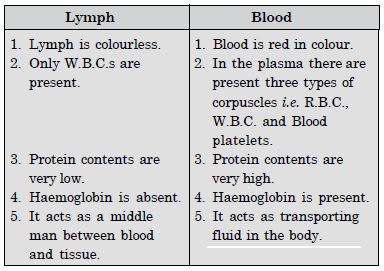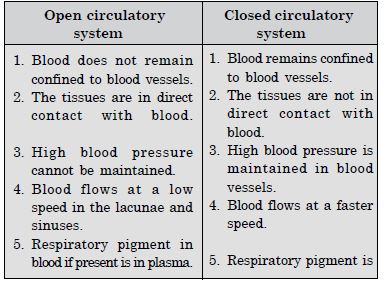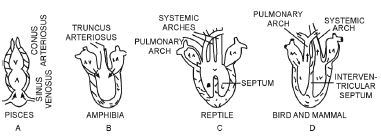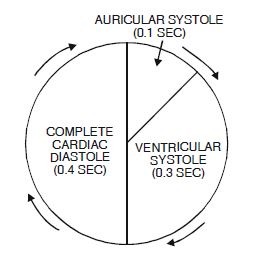NCERT Solutions at Aasoka is the best educational resource for students to kick-start their learning. This helps them to understand the topics of the chapter better. The experts have designed the NCERT Solutions for Class 11 with the aim to provide quality educational resources which will assist students even in competitive exams. We have made learning easier for you by listing down all the important questions along with their solutions.
In the chapter “Body Fluids and Circulation” of Biology Class 11, students will learn about the mechanism of circulation of blood, the human circulatory system, regulation of cardiac activity, the composition of blood, ECG, coagulation of blood, the structure of human heart, the composition of lymph and its function, properties and composition of blood and lymph, double circulation, and much more.
Question 1:
Name the components of the formed elements in the blood and mention one major function of each of them.
Answer:
(1) Erythrocytes or Red Blood Cells. They play a role in transport of respiratory gases.
(2) Leucocytes or white Blood Cells.
(a) Granulocytes
(i) Neutrophils. (65 – 65%) They are phagocytic cells which destroy foreign organisms entering the body.
(ii) Basophils. (0.5 – 1%) They are involved in inflammatory reactions.
(iii) Eosinophils. (12 – 30%) They are associated with allergic reactions.
(b) Agranulocytes
(i) Monocytes. (6 – 8%) They are phagocytic cells.
(ii) Lymphocytes. (20 – 25%) These are of two types; B and T lymphocytes, both of which are responsible for immune responses of the body.
(3) Blood platelets (Thrombocytes). (1,50000 – 3,50000 mm–3) Play important role in blood clotting.
Question 2:
What is the importance of plasma proteins ?
Answer:
Plasma proteins are of various types :
- Fibrinogens are needed for blood clotting.
- Globulins are mainly involved in defence mechanisms of the body.
- Albumins help in osmotic balance.
Question 3:
Match the question.
- Eosinophils
- RBC
- AB Group
- Platelets
Answer:
1. (c) 2. (d) 3. (b) 4. (a)
Question 4:
Why do we consider blood as a connective tissue ?
Answer:
Blood is the softest tissue of the body that is mobile in nature and composed of fluid matrix part, the plasma and the cells called blood corpuscles. It circulates throughout the body and its component cells perform various functions for the body parts, so it is a connective tissue.
Question 5:
What is the difference between lymph and blood ?
Answer:
Differences between lymph and blood
Question 6:
What is meant by double circulation ? What is its significance ?
Answer:
Double circulation. It is found in amphibians, reptiles, birds and mammals.
In this case blood passes twice through the heart to supply once to the body.
It is more efficient as blood flows at higher pressure, especially in birds and mammals, which increases the rate of food and oxygen supply to the cell and also rapid removal of wastes from them.
Question 7:
Write the differences between :
- Open and closed system of circulation.
- Systole and Diastole.
- P-wave and T-wave.
Answer:
- Differences between open circulatory system and closed circulatory system.
- Differences between systole and diastole.
- Differences between P-wave and T-wave.
Question 8:
Describe the evolutionary change in the pattern of heart among the vertebrates.
Answer:
There is a great evolutionary change in the pattern of heart among vertebrates which is as follows :
- Fishes. They have two-chambered heart with a single auricle and a single ventricle. Two accessory chambers : sinus venosus and conus arteriosus are also present. Sinus venosus receives deoxygenated blood from veins. Flow of blood is—
Sinus venosus ® auricle ® ventricle ¾® conus arteriosus ® gills.
Oxygenation occurs in the gills. The heart of fish is called venous heart as it contains only venous (deoxygenated blood). They have single circulation. - Amphibians. They have three-chambered heart with two auricles and one ventricle. Two accessory chambers : sinus venosus and truncus arteriosus. The sinus venosus receives deoxygenated blood from the body via sinus venosus and left auricle receives oxygenated blood from the lungs. Since there is mixing of blood, amphibian heart is called Arteriovenous heart.
- Reptilian heart. Except crocodiles and alligators, reptiles have incompletely four-chambered hearts. They have two auricle and a single partially divided ventricle. Only one accessory chamber i.e. sinus venosus is present.
- Birds and Mammals. They have four chambered heart with two auricles and two ventricles. The right auricle receives deoxygenated blood from body parts and sends it to right ventricle which pumps the deoxygenated blood to the lungs for oxygenated. The left auricle receives oxygenated blood from lungs and sends it to left ventricle which pumps the oxygenated blood to all body parts.
Evolution of vertebrate heart’s (A) Heart of Pisces, (B) Heart of Amphibia, (C) Heart of Reptile, (D) Heart of Bird and Mammal
Question 9:
Why do we call our heart Myogenic ?
Answer:
We call our heart myogenic because in our case, the heart beat is initiated by a patch of modified heart muscles.
Question 10:
Sino-atrial node is called the pacemaker of the heart, why ?
Answer:
Sino-atrial Node (Pacemaker). It is situated in the right artium at the junction of superior vena cava and the right auricular appendage. This node generates the normal cardiac impulse at the rate of 70 to 80 per minute in the adult and acts as the pacemaker of heart.
Question 11:
What is the significance of atrio-ventricular node and atrio ventricular bundle in the functioning of the heart ?
Answer:
Atrio-ventricular Node. It is situated in the right atrium at the posterior part of the interatrial septum. The node receives the impulse originating from SA node and transmits it to the ventricle through the bundles of His. Bundle of His (AV Bundle). The main trunk of this bundle is continuous with the AV node and passes upwards until it reaches the posterior part of the interventricular septum and then forwards below it.
Question 12:
Define cardiac cycle and cardiac output.
Answer:
Cardiac cycle. It consists of one heart beat i.e. one cycle of contraction and relaxation of the heart. It is a regular sequence of (i) auricular systole, (ii) ventricular systole and (iii) joint diastole (complete cardiac diastole).
Cardiac output. The amount of blood pumped by the heart per minute is called cardiac output or heart output. It is about 5 litres in a healthy individual.
Cardiac cycle.
Question 13:
Explain heart sounds.
Answer:
During a cardiac cycle, two heart sounds are produced. ‘‘Lubb’’ is produced due to closing of A.V. valves which prevent the backflow of blood from the contracting ventricles to the relaxing atria. ‘‘Dupp’’ is produced due to closing of semilunar valves which prevent the backflow of blood from the great arteries to relaxing ventricles.
Question 14:
Represent a standard ECG and explain the different segments in it.
Answer:
ECG. Impulse conduction generates tiny electrical currents in the heart, that spread through surrounding tissue to surface of body. If electrodes are properly placed on body surface at specific places, the electric potentials generated by the heart during the transmission of impulse from SA node through a conducting system can be recorded. Such a record is called Electrocardiogram (ECG) and device used is electrocardiograph. A normal ECG is composed of a P wave, a QRS complex and a T-wave.
where P = depolarization of artium indicates SA node activation wave.
PQ—Contraction of auricle QRS = depolarization of ventricle
Q wave and ascent of R wave indicates spread of impulse of contraction from AV node ® bundle of His ® Purkinje fibres ® ventricle muscles.
R—S and S—T interval = contraction of ventricle






